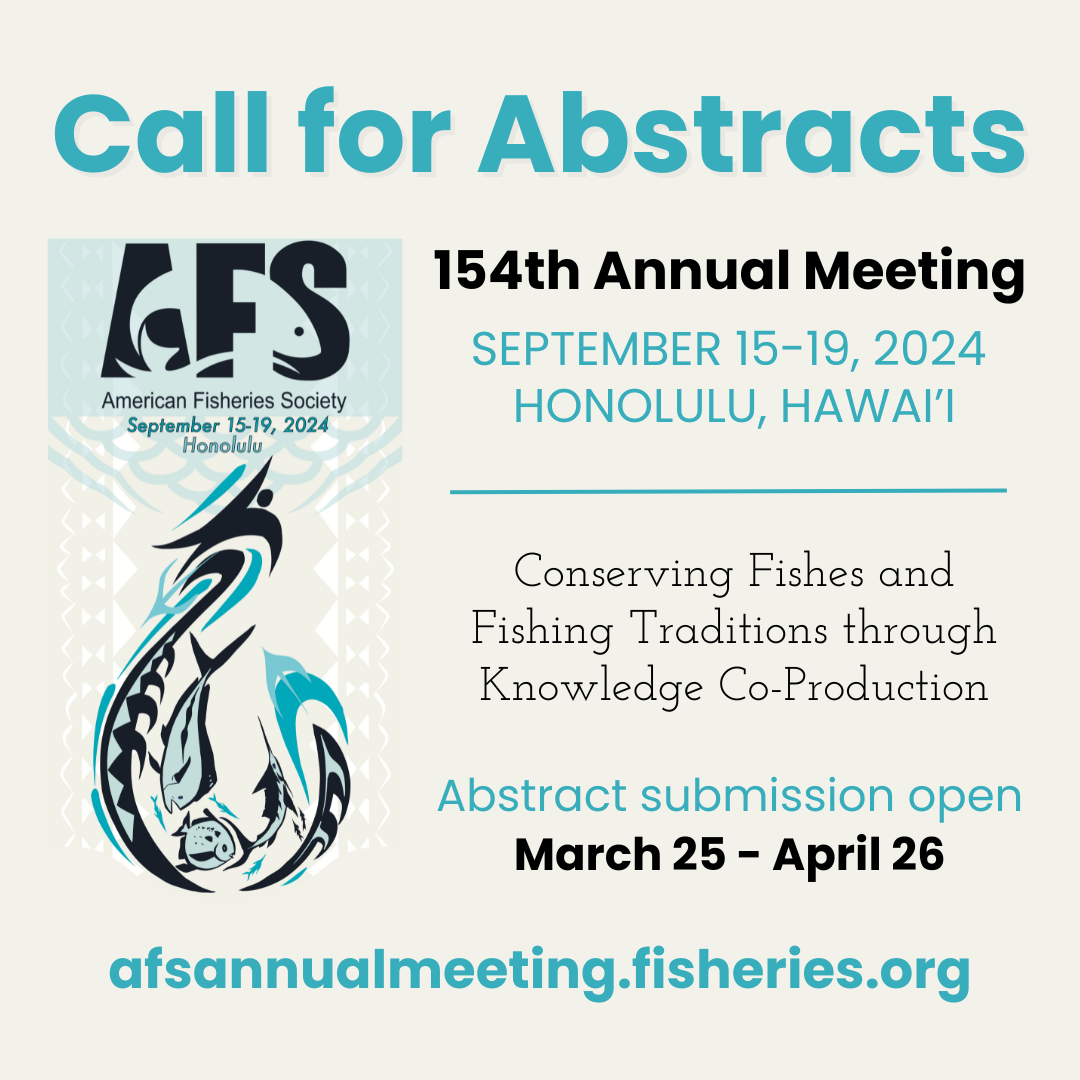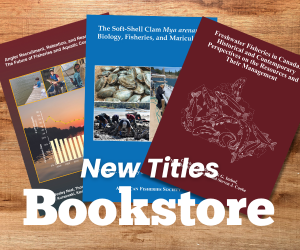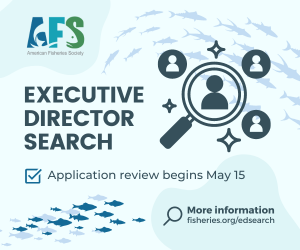By So-Jung Youn, William W. Taylor, Jim Martin, and John Robertson
Policymakers and scientists need to work together to create and implement science-based decisions and actions that sustain and protect our fisheries and aquatic resources. It appears, however, that there has been an increase in politicization and political appointees in leadership roles within resource management agencies. Many of these political appointees generally do not have the technical fisheries knowledge or experience required to make decisions that will lead to the enhanced sustainability of our fisheries and aquatic systems. In this article, we discuss how increasing politicization can impact an organization and its actions and, when the impacts of increasing politicization are negative, what steps can be taken in order to promote the use of science in fisheries management decisions while respecting the role of politics in natural resource management.
Through the past several decades, there has been a shift in general population demographics and declining numbers of hunters and anglers throughout the United States. At the same time, the number of people interested in natural resources from nonconsumptive and preservation perspectives has increased, shifting the belief and values of the stakeholders involved in natural resource issues and the constituencies of natural resource agencies. This shift in attitudes toward the use and value of natural resources is, in part, due to increasing urbanization and less involvement in outdoor recreational activities (Poudyal et al. 2011). Public interest in natural resources has thus shifted from a commodity interest to nonextractive uses, in part because fewer people are participating in angling and hunting activities. More Americans now prefer experiences of natural resources (e.g., bird watching, hiking, camping, tourism) and are less focused on harvesting these resources for their personal use. As a result, today’s stakeholders of natural resource agencies want a wider range of perspectives, especially issues of nonconsumptive and existential uses, to be considered in natural resource decisions. Stakeholders are also asking for more transparency from natural resource agencies regarding how the activities and decision-making process of these agencies address stakeholders’ varied interests.
IMPACT OF POLITICIZATION ON ORGANIZATIONS AND DECISION-MAKING PROCESSES
Politics and Organizational Change
Over time, organizational structure and composition of natural resource agencies have evolved in order to adapt to changing goals, demands, and stakeholders. One example is the increase in political appointees within an agency. These political appointees, who often have little technical training in or knowledge of natural resources science and management, are increasingly making up a larger proportion of agency personnel, especially in positions with more decision-making authority. This politicization of an organization can have both positive and negative consequences on organizational culture and decision-making processes. For instance, political appointees can bring “outsider” perspectives that give a fresh look to natural resource issues, especially in the context of evolving socioeconomic and cultural viewpoints, and a new way of operating agencies that may improve efficiency and effectiveness. Political appointees can also help bridge better communication between natural resource experts and policymakers, as they may be able to “speak the language” of both groups or have a more holistic view of the societal impacts of decisions that are made. For example, when Mike Dombeck (a fisheries biologist) was appointed as chief of the U.S. Forest Service (USFS) by President Clinton, Dombeck expanded the focus of the USFS from trees and lumber to water and watershed health. By changing the focus of the agency, Dombeck helped the USFS reach beyond its traditional constituency (loggers and grazers) and expand to a new mission of watershed stewardship, bringing together more stakeholders and partners.
Having political appointees as leaders at many levels of the organization, however, can also decrease the flexibility of decision making in the organization by increasing organizational hierarchy, slow the speed of decision making, and move decisions away from being based on science. As political appointments reach deeper into an organization, the possibility of nonscientifically based decisions can increase if decision makers do not trust or are not aware of, the science related to the issue. As more leadership positions of the organization become political appointees, there may be a lack of organization leaders who are technically trained in the sciences. The lack of technically trained members in an organization can lead to a decrease in technical knowledge and training in the organization, which can reduce the quality of the decisions that are made and result in actions that do not protect the long-term sustainability of our resources. Such actions can also decrease the trust that stakeholders have in the agency and its leaders. Thus, making decisions that are not science based can make the organization less effective in its mission and outcomes, such as the conservation of threatened or endangered species. In addition, more political appointees can mean that there is more turnover (e.g., organizational changes occurring with governmental changes) within the organization, which disrupts the continuity of an organization and makes it more difficult to carry out long-term objectives that need to occur over multiple governmental changes.
To work effectively in the midst of political change, it is important for an organization to focus on its growth and evolution over time—where it is going (where it wants to be) and why. To do this, natural resource agencies should anticipate changes in stakeholder composition, interests, and skills. By anticipating changes, strategies can be developed to address the probability of change (such as potential stakeholder responses to a given management action or problem) so that the agency is better prepared for the complex challenges that may arise in the future. These challenges can arise from social and environmental changes that impact fish and wildlife habitat, productivity, and human values. For instance, former chief of Fisheries for the Michigan Department of Natural Resources (MDNR), John Robertson, utilized his understanding of the election cycle in Michigan to implement a two- to three-year planning period essentially reflecting the changes in political philosophy that occur at every election cycle. This planning period was a time of strategic visioning and planning for the Fisheries Division of the MDNR that helped the staff and stakeholders plan where they want to go, why they want to go there, and whether their current direction and actions fit the MDNR’s public trust mission and vision. Thus, the planning period helped create a cohesive vision among MDNR employees, leaders, and the public—one that incorporated their buy-in and support. In addition, because employees and MDNR constituents could voice their opinions during the planning process, the MDNR helped ensure that these groups were more knowledgeable of, and better represented in, the Fisheries Division’s overall vision, mission, and activities.
Ways to Engage with Politicization
Politics is an inevitable part of life. That doesn’t mean, however, that politics is always bad and that increasing politicization is inherently negative. Increasing politicization, for example, can make connections with new and diverse stakeholders easier and give voice to those who have been underrepresented in prior decisions. On the other hand, politically based decisions could make creating connections with stakeholders more difficult if these stakeholders do not agree with the political views of the organization or its leaders. How should agency members respond, for instance, when an elected official or his or her appointee wants an agency to adopt a decision or action that agency employees believe is not in the public or resource’s “best interest”? Agency staff often do not have the power to “just say no” to their boss(es). Consequently, help from outside organizations that interact with policymakers and support agency personnel’s opinions can help shape public opinion to ensure that decisions and activities consider multiple viewpoints to best fulfill the public interest.
In our society, increasing transparency is, in part, the role of investigative journalism and the media, and it allows for greater accountability by the public. As such, it is critical for agencies and natural resource professionals to have trust and a good working relationship with the media, politicians, and the public. If there is a good relationship, especially trust, people are more likely to be helpful in the face of inappropriate influence from others. A good working relationship with the media also helps increase public access to information on natural resource management, which improves public support of science-based decisions and can increase public resistance to politically motivated appointments and management decisions when they are harmful to resource productivity and sustainability.
Increasing public access to information can increase public involvement in natural resource management and decision making, creating opportunities for the public (such as citizen advisory groups) to become involved in decision-making processes. An empowered public can hold agencies accountable and potentially serve as a barrier between agencies and poorly formulated, politically driven decisions. To increase the efficiency of outreach efforts, many fisheries professionals need to obtain additional training in the “soft” skills, in addition to science and technical skills, so that they are comfortable and proficient in building relationships with nonfisheries professionals, especially the media and politicians. These soft skills include teamwork (particularly interdisciplinary and diverse teams), networking, and communicating with nonscientific audiences. Such skills can be learned from leadership courses and training workshops, mentoring, or asking existing partners how you could improve in these areas.
In addition, better two-way communication with the public, such as through surveys and effective dialog (through extension specialists, social media engagement, or other fora), on natural resource issues helps put the influence of special interest groups into a broader perspective that includes many different stakeholders and viewpoints. An example is public opinion polling, which tracks public attitudes regarding factors contributing to the environment (e.g., climate change). As public attitudes shift due to the accumulation of scientific evidence, it becomes more difficult for climate change deniers to maintain credibility since they are espousing a position with which more and more people disagree. The work put into improved communication with the public can create or strengthen dialog between agency personnel and the public so that agencies know how their stakeholders (e.g., the public) feel about a specific issue and stakeholders have the opportunity to make their opinions heard by agency members and others. If agencies are unsure how their stakeholders feel about an issue, it makes it easier for special interest groups to portray, incorrectly, that the special interest groups are acting in the public interest. Common examples often revolve around infrastructure or development proposals that trade fish or wildlife habitat and productivity for economic stimulation. In these cases, the tradeoffs need to be scientifically, rigorously evaluated with transparency and widely distributed for public communication and engagement.
There is a fine line between elected officials having the opportunity to implement their agenda and inappropriately influencing natural resource staffing and policy decisions in ways that are not in the public or resource’s best interests. The most important indicator is usually transparency to the public regarding how and why decisions have been made. Transparency often serves as a litmus test of what is appropriate or not in regards to political and agency actions and influence. By communicating to the public regarding the decision that is made and how that decision was reached, agencies are improving the transparency of their decision-making processes and discussing their belief that the decision is scientifically sound and in the best interests of the public and the resource.
Likewise, agencies should be transparent about their vision, mission, and work (decisions and activities) and demonstrate their accountability, to the public and to politicians, regarding these actions. One way to do this can be through reports to the public. Another method is through consistently reviewing and updating an agency’s strategic plan in order to ensure that the agency’s vision and mission are being accomplished and reflect current environmental and social needs. Unfortunately, most organizations do not implement or update their strategic plans, nor alter their actions in order to achieve their milestones. Creating and implementing a strategic plan is difficult, but doing so can help an agency clarify how it defines and values the public trust resources it is charged with managing, articulate the agency’s role within natural resources management, and ensure that the organization is continuing to serve its stakeholders in the present and in the future. One thing for agencies to keep in mind is that their stakeholders include politicians, the media, environmental advocacy groups, and university extension networks, in addition to more “traditional” user groups (e.g., hunters, anglers, and their associated organizations). Both annual reports and strategic plans are ways for agencies to think about and evaluate what they are doing in a transparent, inclusive manner with all.
Ultimately all decisions are political decisions involving trade-offs between different factors, so it is important for agencies to include stakeholder and political desires in their decision-making process, in addition to technical scientific knowledge. To effectively accomplish this, agencies need to reach out to nontraditional stakeholders, in addition to the more traditional stakeholders, and to the media. By doing so, agencies can generate meaningful discussions and information flows with all stakeholders so that they are informed regarding the agency’s work and stakeholders. These opinions and concerns can inform the agency’s strategic plan and other decision-making processes, such as hiring decisions. Outreach efforts also help agencies create productive partnerships for sharing and channeling information to target groups by connecting agency employees with others who are interested in fisheries and can further disseminate information to their own networks. In addition, outreach can build trust in the agency (and thereby increase agency credibility) by ensuring that stakeholders have access to scientific information needed in order to make scientifically informed decisions. Outreach further creates accountability for agencies and can show stakeholders that the agency is taking concrete actions to act on the information provided by stakeholders.
Working with professional societies (such as the American Fisheries Society) and nongovernmental organizations (such as The Nature Conservancy and Trout Unlimited) is important for natural resource agencies. Professional societies can play important roles in speaking out against or for political influences on natural resource policy or staffing decisions and strengthen the case for science-based (rather than solely politically based) decisions. In some cases, professional societies can say and do things (with the backing of a group of scientific professionals) that individual agency professionals may find difficult to say or do, especially if these positions run counter to the agency leader’s stated
policy positions. Thus, having strong state and regional presences of professional societies, as well as the willingness and courage of members to speak out in support of science-based decisions, is extremely important as the dominance of political demands increases.
REFERENCE
Poudyal, N. C., J. M. Bowker, G. T. Green, and D. G. Hodges. 2011. Modeling the impact of changes in land use and socio-cultural patterns from urbanization on recreational fishing. Pages 163–180 in E. Turunen and A. Koskinen, editors. Urbanization and the global environment. Nova Science Publishers, Hauppauge, New York.
Members click below for the September 2017 Fisheries magazine’s complete issue. Non-members, join here.
This content is for members only. Please login.





